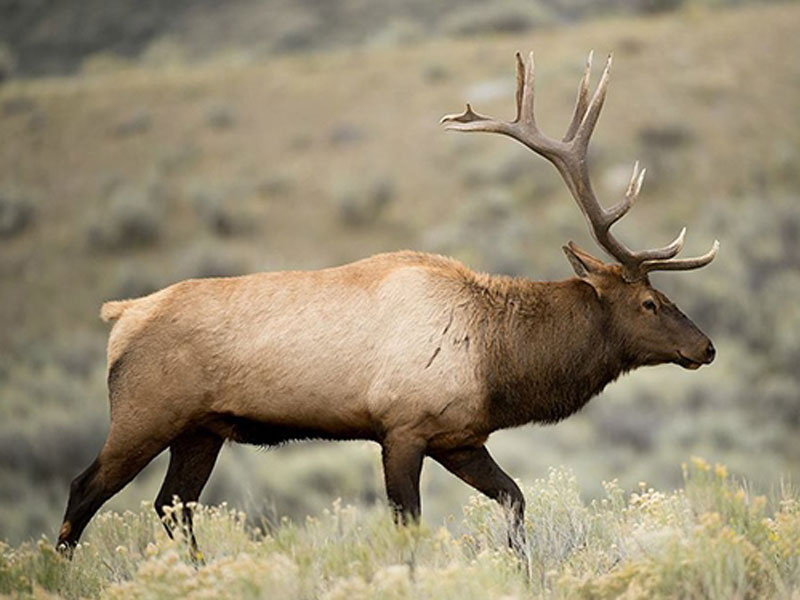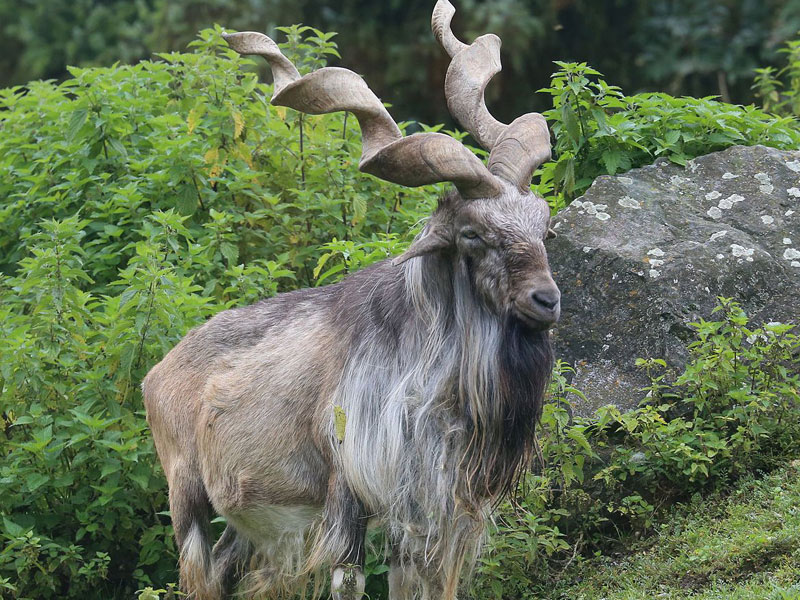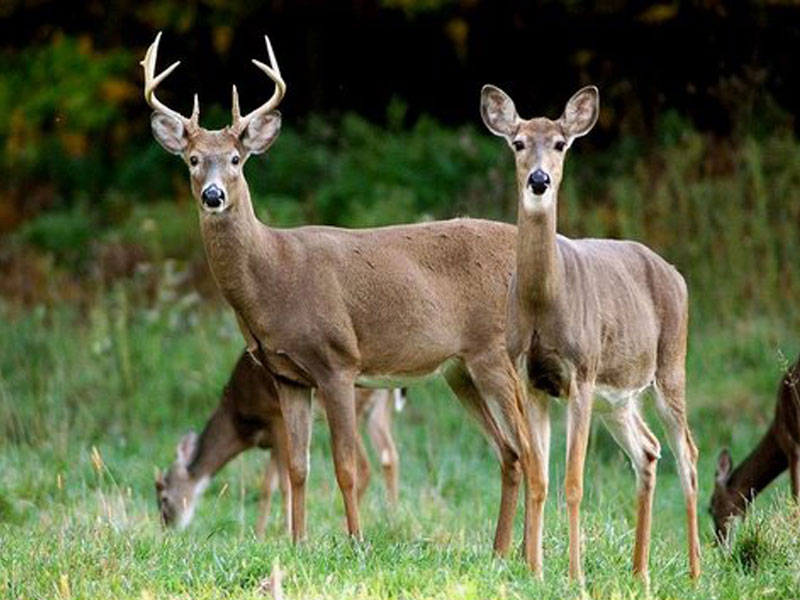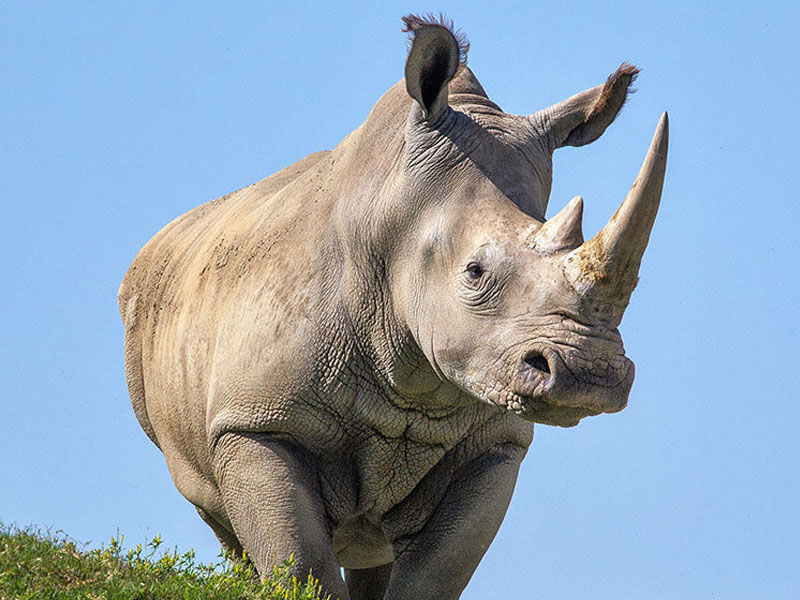Big Game, Big Change and Big Opportunity
A Friend in the Field discusses the advantages of Big Game Hunting and the benefits they provide to Conservation
With Boris’ “road map out of lockdown” and some very encouraging vaccination numbers, both at home and abroad, we have good reason to think more positively about the year ahead. Some of us may even look to start booking trips abroad in search of a sporting adventure this summer. As a sporting community it is also time to refocus our attention on some of the crocodiles getting steadily closer to our canoe. One of these which may have slipped your mind is the UK’s consultation on controls on the import and export of hunting trophies. The consultation ended almost a year ago and as yet no results have been released, however with the dust, hopefully, soon to settle over Covid we may well have a problem, in the form of Lord Goldsmith, on our hands before long. What never fails to shock me however, is the volume of people in the world of field sports who happily spend their weekends riding to hounds, Pheasant shooting or Stalking; yet when they hear you have planned a trip to Africa to hunt plains game, look at you with utter contempt.
The aim of this article is therefore is to convince those sceptics of the merit that hunting has as a valuable tool for conservation and encourage them to support the big game hunting industry.
In 1907 only 41,000 Elk remained in North America; their numbers decimated throughout the 17th, 18th and 19th centuries by hunting for food, skins and bones after the settling of North America by Europeans. Today, thankfully, there are over a million Elk roaming the same territory. Similarly, White Tail Deer numbers boomed from 500,000 to 30 million and Pronghorn antelope from 13,000 to 1.1 million[1]. The US is not the only place where large fauna have experienced a renaissance, at the close of the 19th century the Southern White Rhino population was on the eve of extinction with only 50 individuals remaining, poached to the brink; in 2017 the population was estimated at 18,064[2]. In 1965 when the IUCN first surveyed the Markhor population in central Asia, again hunted to critical numbers, they concluded that there was not enough viable data to estimate the size of the population yet in its most recent study published in 2015 the total population was estimated to be 9,700 individuals[3].
What then, in a world with a human population nearing 8 billion, where habitat is destroyed in the thousands of square kilometres to make way for man’s ever booming population and his insatiable demand for resources, could be causing these anomalies in the so-called extinction event of the 21st century? The answer controversially and counterintuitively is hunting.
Before going any further I want to be clear that we are talking about responsible sport hunting only; poaching, un-regulated trophy hunting or hunting for sustenance are entirely different. When we talk about conservation the National Geographic Society’s definition is apt for this situation, it says, “Conservation is similar to preservation, but while both relate to the protection of nature, they strive to accomplish this task in different ways. Conservation seeks the sustainable use of nature by humans, for activities such as hunting, logging, or mining, while preservation means protecting nature from human use”[4]. Put simply will the activity positively affect the resource for future generations?
The North American model of conservation is beyond any doubt the most well established, documented, successful and widely recognised example of conservation fuelled by hunting. As touched on, populations of game in North America and Canada were dwindling to say the least in the 19th century. This was almost entirely due to human encroachment, largescale killing of wildlife for meat, skins bones and other resources, and the ease of which this could be done through, what was at the time, modern technology such as repeating firearms and the creation of railroads. In the year 1870 alone, it is estimated that two million Bison were killed[5], unthinkable. What changed?
As America grew and quality of life improved US citizens found they had more free time and some began to use that to hunt recreationally. These new sport hunters recognised the severe depletion of the big game populations and the effect that so called market hunters were having on them. In 1885 George Grinnell, at the time the owner of Forest and Stream, a well-known US Hunting journal, met with a man from New York who’s book he had recently reviewed and believed they might find common ground. The man he met was Theodore Roosevelt and together they formed The Boon and Crockett Club in 1887. Their stated mission was to, “take charge of all matters pertaining to the enactment and carrying out of game and fish laws”[6]. In layman’s terms they developed and implemented through both culture and law a code of hunting ethics, self-regulation, which sought to conserve wildlife for public use.
These new sport hunters called for proper management, monitoring, quotas and wildlife professionals to protect wildlife from irresponsible use. How would they pay for this? Hunting. Licences for big game had already been a thing for some time however their design was to discriminate against non-state residents. In 1897, in Wisconsin, resident licenses costs just $1, non-resident license costs $30, non-residents paid more thereby protecting hunting for state residents. It wasn’t until later on that they became a tool for conservation. In 1920 the cost of a deer tag was only 10 Cents, by 1961 it was $4-$5 and has since risen steadily. In 1999 the cost had reached around $20[i] and 690,194 licences were sold raising almost $14 million[7], $21.7 million in today’s money, for conservation through licences of just one species in just one state. In conjunction with the raising of funds conservationists lobbied for legislation to protect the dwindling game reserves. In 1917 “shining” Deer, shooting at night, was banned, in 1925 legislation was passed which mandated closing deer seasons in alternate years and in 1937 the entire open season for deer in Wisconsin lasted only three days. In the same year the “Federal Aid in Wildlife Restoration Act” was passed implementing an excise tax on hunting related products to fund state wildlife agencies between 2007 through 2016 this tax raised a total of $6.2 billion of revenue[8]. The results of this Licensing and self-imposed regulation are clear. In 1962 the Wisconsin deer population had already been saved from its epic low at the beginning of that century and was estimated at around 400,000 between then and 1989 it grew by 187.5% with a pre-season population estimated at 1.15 million[9], the harvest numbers and licences sold reflect this. Almost all other game species which declined around the same time have experienced a similar resurgence.
If these numbers are not enough to convince you of the link between responsible sport hunting and flourishing wildlife, then maybe the money spent on conservation will. Through licences and fees US sport hunters pay roughly $796 million a year toward conservation in addition they pay an average $440 million a year toward conservation through donations to charitable organisations such as Boone and Crockett, Dallas Safari Club, Wild Sheep Foundation and the Rocky Mountain Elk Foundation. In total US Sport hunters average a staggering $1.6 billion per annum to support conservation[10].
The US is the macro scale example of Sport hunting’s positive influence on game populations, has had over 200 years to develop, abundant participants and funds. A smaller more recent project which displays with more clarity and focus the mechanism which promotes conservation through sport hunting is the protection of the Markhor.
The Markhor is a Himalayan Mountain goat, the national animal of Pakistan and one of the most sought-after trophies for mountain hunting enthusiasts. In 1985 the first study by the IUCN categorised the Markhor as Vulnerable with a rapidly declining population due to over hunting in the previous century followed by excessive poaching by locals.
Conservation efforts began in Pakistan’s Torghar mountain range, by the mid 1980s the combined population of Markhor and Urial, the two species to be protected in the Torghar region, was 200 individuals. Locals set up the Torghar Conservation Project (TCP) later becoming known as The Society for Torghar Environmental Protection (STEP) which set out to protect the species and prevent poaching through trophy hunting fees. The project commenced in 1986 and hired former poachers who knew the animals and the region as game guards, in the first ten years it raised $460,000 through 14 hunts for mature Markhor bulls[11].
Once TCP got off the ground others followed suit, however in the early 90s the population of the Markhor was still in decline and, not recognising the positive effects that hunting was having, the Convention on International Trade of Endangered species (CITES) moved the Markhor to appendix I. This made it far more difficult to export trophies and therefore sell hunts. Thankfully five years later the Pakistani Government was granted six licences per annum to hunt and export Markhor, five years later in 2002 the quota was doubled to 12 animals each selling in the region of US $25,000 at the time; the local community receiving 80% of the fee and the Government receiving the remaining 20%11. In light of the gross minimum wage in Pakistan being only US$152 per month[12], one begins to understand why this provides an enormous incentive for locals to protect Markhor. This money directly pays the wages of game wardens and finds its way back into the local economy, in addition STEP and TCP used their share of the fees to build dams water and irrigation systems, to purchase fruit trees, a medical centre was set up, for many the closest by 90km, and money was set aside for drought relief[13].
The effects of this conservation effort with sport hunting at its heart are blindingly obvious. The project has monetised wildlife in rural Pakistan thereby incentivising the local population to protect wildlife as a valuable resource which benefits their community and quality of life. Illegal killing of wildlife and poaching has seen an almost total cessation, perhaps due to the now maximum 3 year prison sentence it carries due to the animals having gained such economic value. The direct impact on the subject species was a 117% rise between 1994 and 1999 in the areas managed by TCP and STEP from 135 to 293 observed individuals[14]. A global population trend is harder to ascertain as the most recent data for different areas is spread over about a decade and there is not enough historical data to build a previous picture. The IUCN however uses data from between 2011 to 2013 to estimate a global population of 9,700 individuals[15] and moved the Markhor from “endangered” to “near threatened” in 2015.
The final case study I want to visit, covers the differences in wildlife management between some east African countries and southern African countries. It is a well-known fact that many of the African big game species have been in decline since the beginning of the 18th century. Fast forward to 1968, the White Rhino population is estimated, in South Africa, to sit at 1,800 individuals[16]. In the same year South Africa legalised the hunting of Rhino in line with CITES regulations. Revenues from the sales of Rhino hunts paid for game guards and in some cases entire security details to protect Rhino, the difference between this example and the TCP in Pakistan is that the enterprises are private and most Rhino are hunted on private reserves. This revenue has encouraged around 300 South African landowners to conserve around 6,140 White Rhino as of 201616.
Don’t believe that hunting is supporting this rise? One reserve which manages a rising population of 195 White Rhino, reported that 63% of its expenditure was covered by profits from sport hunting. This revenue, of US $617,000, was generated from the hunts of only seven White Rhino over eight years16. As the value of Rhino grew in South Africa other landowners sought to buy Rhino in order to set up their own lucrative safari businesses. The same reserve has generated a further US $973,000 on the live sale of Rhino to other businesses spreading the range of Rhino in southern African nations and notably repopulating Botswana which saw a total extinction of Black Rhino and a low of just 27 White Rhino in 199216.
Between 1968 and 2016 South Africa experienced an increase in the White Rhino population from 1800 to 18,400 individuals. The ability of the public sector to own and profit from wildlife is dissimilar, as you will see, to many other African nations and has allowed the sector to boom leading to significant other benefits such as food security, skilled work in rural communities, land reform and employment.
Compare this to the Kenyan approach to wildlife conservation. Kenya banned hunting outright with no exceptions in 1977. No sport hunting, no meat hunting, no hunting on private or public land of any species. The magnitude of decline in Kenya’s wildlife varies between 72% and 88% for some of the worst affected species and 68% on average from 1977 to 2016[17]. The reason for this decline, when you sift through the fog of disinformation propagated by so called animal rights lobbies, is simple. Like other African nations, Kenya has a booming population which grew by 235% between 1977 and 2016 to 49 million[18], land use has to produce profit for owners and there is currently no incentive to conserve large fauna as it has little to no commercial value.
With no incentive to protect game from poaching stocks fell, the effect of poaching was felt most acutely, as ever, by the iconic species such as elephant and rhino however the bushmeat trade also boomed to supplement the growing population’s needs seeing a reduction in the plains game species too. The effect of poaching however is minimal the real issues stem from human wildlife conflict particularly where grazing and crops are concerned. The numbers of sheep and goats increased by 76.3% between 1977 and 2016 and the total livestock biomass was 8.1 times larger than wildlife in 2011 – 13 compared to 3.5 in 1977 – 8016.
Livestock are clearly replacing wildlife in Kenya, why? They create profit.
The bottom line is that we now live in a world of over 7.2 billion people, a population which is expanding exponentially. Habitable land mass is finite and highly sought after, good intentions and ‘adopting’ an elephant for £12 a month are not going to be enough to produce results if we don’t want our grandchildren to merely read about such creatures in a history book. The only way we are going to keep these animals from disappearing is to make them worth something to the people who live side by side with them. How many cattle do you think we would see if man did not eat beef and drink milk? Or for that matter how many pheasants in our own green and pleasant lands if there was no game shooting. Mankind is greedy, he will protect that which makes him wealthy; it is through this most distasteful of characteristics though that we have the opportunity to undo the mistakes of the past and protect what is left of the world’s wildlife.
I want to finish by outlining what I see as the criteria to be met for sport hunting to really work as a conservation tool. The first is a market, without clients who want to hunt this is never going to get off the ground. Thankfully the US has been propping up the market thus far whilst other countries, the UK included, ponder the prospect of banning CITES listed imports altogether for what they see as the benefit of conservation. The second is transparency and relatively low corruption, for money to both return to communities and make its way into conservation projects. The third is regulation, this may be self-regulation as in the case of the United States or it could be external to the industry via conservation groups such as the IUCN or CITES.
If we let the UK turn against hunting and make the imports of CITES listed species difficult or even impossible, as suggested by the consultation, then we will be removing a chunk of and weakening the afore mentioned market thereby threatening the good work that is being done by hunting organisations worldwide. We will also be sending a message to the rest of the world which has the potential to create damaging ripples and encourage other countries to follow suit. This neo-colonial policy of dictating how other nations should manage their natural resources is unhelpful and unhealthy and will have the adverse effect to that which is intended
It’s time for the public to break away from the emotional and historical stigma of hunting. There is a “wildlife economy” out there, being driven by responsible hunting, in some cases it is booming but in others it is under threat from pseudo-science, the “woke agenda” and closed-minded ignorance of those who would proclaim themselves “wildlife activists” yet have never contributed a penny toward conservation. Such groups are vilifying hunting with their diatribe of criticisms based on historical pretexts which are both outdated and distorted. It is our job to stop them and help science and common sense prevail in order to preserve something immeasurably special for future generations.
[1] Rocky Mountain Elk Foundation, Hunting is Conservation, accessed 03 Jan 21
[2] IUCN Red List, Southern White Rhino, accessed 03 Jan 21
[3] IUCN Red List, Markhor, accessed 03 Jan 21
[4] National Geographic Society Resource Library Encyclopedic Entry, Conservation, accessed 04 Jan 21
[5] US Fish and Wildlife Services, Timeline of the American Bison, accessed 09 Jan 21
[6] The Wildlife Society and The Boone and Crockett Club Technical Review, The North American Model of Conservation, accessed 18 Jan 21
[7] Wisconsin Department of Natural Resources, A Chronology of Wisconsin Deer Hunting from Closed Seasons to Record Harvests, Accessed 23 Jan 21
[8] Federation of American Scientists, Pittman-Robertson Wildlife Restoration Act: Understanding Apportionments for States and Territories, Accessed 24 Jan 21
[9] Wisconsin Department of Natural Resources, A Chronology of Wisconsin Deer Hunting from Closed Seasons to Record Harvests, Accessed 23 Jan 21
[10] Rocky Mountain Elk Foundation, Hunting is Conservation – Paid for by Hunters, Accessed 24 Jan 21
[11] A Review of Community-Based Trophy Hunting Programs in Pakistan 2001, IUCN Caprinae Specialist Group, Accessed 31 Jan 21
[12] Statistic on Wages, International Labour Organization, Accessed 31 Jan 21
[13] The Torghar conservation project: Management of the livestock, Suleiman markhor (Capra falconeri) and Afghan urial (Ovis orientalis) in the Torghar Hills Pakistan, Michael Frisina and Montana State University, accessed 31 Jan 21
[14] Suleiman Markhor (Capra Falconeri jerdoni) and Afghan Urial (Orvis orientalis cycloceros) Population Status in the Torghar Hills, Balochistan Province, Pakistan, Michael R. Frisina, Accessed 01 Feb 21
[15] IUCN Red List, Markhor, Accessed 01 Feb 21
[16] Convention on International Trade in Endangered Species of Wild Fauna and Flora, Informing Decisions on Trophy Hunting 2016, Accessed 02 Feb 21
[17] Extreme Wildlife Declines and Concurrent Increase in Livestock Numbers in Kenya: What Are the Causes? Joseph O. Ogutu et al, 2016, accessed 24 Feb 21.
[18] The World Bank, Data, Population Total, Kenya, Accessed 24 Feb 21
[i] For reference the rate of inflation between 1920 and 1999 was 9.1% per annum whilst the inflation in Wisconsin Whitetail Deer licenses is closer to 250% per annum.





